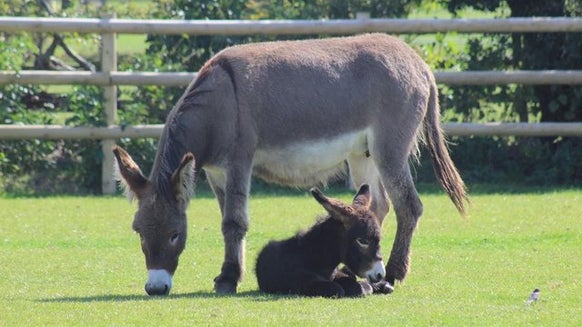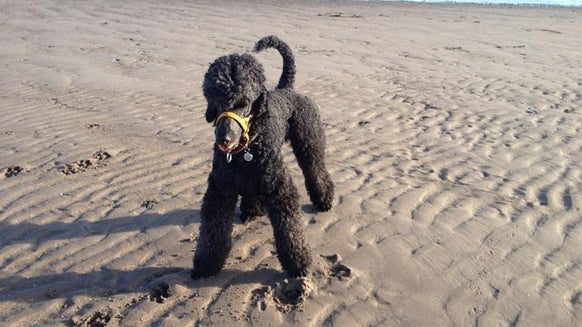Feeding Horses in Winter

A British winter can present a wide variety of weather conditions; from gales and driving rain to hard frosts and snow. Many horses are kept outside all year round and need to be able to cope whatever the weather. Here we take a look at how the change in season affects your horse’s diet.
Natural hardiness and weight fluctuations
The breeding of a horse or pony plays a significant part in how its body manages in different weather conditions. Horses and ponies that are native to Britain have evolved with a hardiness that makes them able to cope with relatively severe winter weather.
One feature of how the horse is adapted to its natural environment is related to the way its weight fluctuates in relation to the changing seasons. Like many other mammals, the horse is designed to enter the winter season with more fat reserves that act as energy stores that can be tapped into, in order to help them cope with the harsher weather and poorer quality grazing.
It is important to monitor weight regularly all year round, however, in winter you will need to check that your horse or pony does not drop below an ideal body condition. A thin horse will feel the cold and use up stored fat to maintain its bodily warmth, therefore losing more weight. Horses in work will need even more food as they use up extra energy to carry out their tasks. Be aware of any reduction in workload due to dark mornings and evenings, poor ground conditions, and dismal weather; make sure you aren’t overfeeding your horse!
Breeds from warmer countries, such as Thoroughbreds and Arabs, are able to cope with hot summers, but are not as well equipped for cold winters. They do not use their nutritional energy as efficiently and do not tend to store so much fat or grow such a thick winter coat as British breeds.
Many owners of warm or hot blooded horses tend to stable them overnight as shelter from the weather. Even in a stable, they will need a rug and additional energy in the form of extra feeds. There is no reason, however, why even a pure bred Arab or Thoroughbred cannot live out all year round with appropriate care. By providing a field shelter, a good quality winter rug and a well thought out diet, the balance between energy intake and energy output should be manageable throughout the colder months.
Pasture management

As a horse owner, it is important to ensure that you have sufficient grazing all year round, but unfortunately horses are heavy animals with feet that quickly churn up soft ground. There are various ways you can try to manage your land to minimise the damage, which include:
- Resting an area of pasture over winter to ensure good grazing for spring/summer. Either reserve a separate field or use electric tape to cordon off an area that your horse can enjoy once the ground has dried out and the grass is growing again in the spring.
- Putting drainage in the most used areas of the field, which tend to be near the gate, in front of field shelters, and around hayrings and water tanks. Straw can provide a temporary reprieve from deep mud, but hardcore, if laid well, will provide a more long term solution. Pick through whatever material is used to make sure there are no objects that could injure the bottom of the horse’s foot and avoid using flints or other sharp edged stone. Flatten the surface as much as possible to eliminate projecting edges. Even then, horses with very sensitive soles may refuse to walk over a hardcore surface and are happier in the mud!
- Putting down a straw pad (as long as your horse does not have a dust allergy), which can provide a comfy, dry area for eating hay or even snoozing. This will need completely removing in the spring and will kill the grass underneath so this option needs to be thought through first.
- Creating an all-weather turnout area. This is the most expensive option, but can be well worth the initial cost. Woodchip, shredded rubber, or even concrete, if properly laid and fenced, can provide a safe, dry area that can be useful on many occasions - not just in winter. These are particularly useful for horses that suffer from arthritis or mud fever. A very hard area, such as concrete, should always be supplemented with some straw, shavings or other softer area to allow a horse to lie down comfortably and safely when it wants to. Muddy ground will inevitably have very little grass on it and even without mud, grass will not grow when the temperature drops below 5°C. Most owners will compensate for the lack of grass by providing forage and any additional feeds that are needed.
Supplementary feeding
Many horses and ponies may not need additional hard feeds through the winter. In fact, around 80% of horses at Redwings are on a grazing and forage (hay or haylage) only diet and therefore do not receive any additional hard feeds. In fact, some horses still have to be managed to prevent weight gain even over the winter – particularly in recent mild winters when we have seen an unusually plentiful supply of grazing through the winter. Fibre first should be the primary feeding principle for every horse, whatever their breeding, throughout the year. Only offer supplementary feeds in addition to plentiful fibre, not instead of it.
Many people are surprised to learn that despite caring for more than 1,500 equines at the Sanctuary each day, additional feeding regimes are based on just two simple products: a low calorie fibre cube and a conditioning cube. We can then personalise feeds if need be with ingredients such as oil (good for adding extra calories), youngster supplements, prescribed veterinary products or appetisers like sugar beet pulp, molasses or chopped carrots and apples to entice fussy eaters.
Low calorie cubes are particularly useful for equines whose teeth mean they can no longer cope with forage, and who receive soaked fibre cubes in at least five separate feeds a day. This allows them to nibble the winter grass happily without being dependent on it to meet their nutritional needs.
Calculating the amount of feed and forage is done as a percentage of the horse’s overall body weight. It is either 2%, 2.5% or 1.5% of the horse’s body weight depending on whether it needs to maintain, gain or lose weight respectively. This is called the daily ration, and it should be split between the forage (hay/haylage) and hard feed depending on the horse’s energy requirements and body condition.
You can find detailed guidance on how to calculate the daily ration for your horse or pony in our weight management advice and guidance Lightening the Load - https://www.redwings.org.uk/news-and-views/lightening-load. You can also contact us for a Body Condition Score card and advice on how to identify weight gain and weight loss in your horse by emailing education@redwings.co.uk.
Rugs

Different breed requirements go some way towards explaining why some horses are rugged and others not. Age, health and living environment should also be taken into account when an owner decides whether or not to rug their horse. Some working horses will be clipped in winter to prevent them becoming uncomfortable when being ridden; these will certainly need a rug to compensate.
Alternatively, a horse that is able to cope well in cold temperatures may become uncomfortably hot if rugged unnecessarily and horses in general find it difficult to cool down once they become overheated because their bodies are so efficient at keeping the heat in.
Horses also generate their own internal heat in a way that we humans can only dream of! Microbes in a part of the intestine called the caecum are what allow a horse to digest fibrous foods like grass and hay and release the nutrients and energy they contain. The process of fermenting fibre in the caecum creates heat which is then contained by the incredibly efficient insulating qualities of a horse’s thick winter coat.
Over-rugging is becoming an increasingly widely recognised problem for leisure horses in the UK. As rug technology has improved drastically in the last few years and winters have been milder, many horses are not burning all their summer fat stores over winter and therefore go into the new grazing season without having slimmed down as might have been expected.
This is partly to blame for high levels of obesity in the UK’s pony population and the challenge for owners is to know when to rug in accordance with their horse’s individual needs, exercise levels and weather. This means regular monitoring and avoiding the temptation to slip rugs on unnecessarily or getting into the habit of leaving a rug on without considering how seasons may have changed or how much more effective your new rug may be.
Ideally, rugs should be removed once a day to check underneath. If the horse has sweated in the rug (which can easily happen if they have a quick charge about or the sun comes out), the humidity can lead to skin problems. Natural hair loss will also gather under a rug, and can become itchy and unpleasant. Removing the rug gives the body and inside of the rug a chance to breathe and allows the owner to check that all is well underneath. It is harder to tell if a horse has lost or gained weight underneath a rug and removing it is the only way of checking that everything is as it should be.
Water
Unlike humans, who tend to drink more water on warm summer days, horses can actually drink more in the winter if they are eating dry food (like hay and concentrates) rather than grass which is around 80% water.
Meanwhile frosty nights can freeze water, meaning that horses are without water for several hours leaving them at risk of dehydration and less able to cope with the winter weather. The first job any owner should do every morning is to check and break ice on water troughs and buckets or provide alternative water sources if pipes are frozen. It’s important to also check water supplies regularly throughout the day if the temperature stays low.
Your horse this winter

By learning a bit more about horses, how their breeding affects their ability to adapt to the elements and how they utilise feed for nutrition, energy and warmth, it will be easier to assess how well your horse is coping – whatever the weather!
Redwings is the largest horse sanctuary in the UK. They have over 2,000 horses, ponies, donkeys and mules in their care, and offer a safe place for equines in need. Alongside this, they aim to rehome those who have the potential to enjoy a fulfilling life outside of the sanctuary, as well as educate current and future owners about horse welfare.








